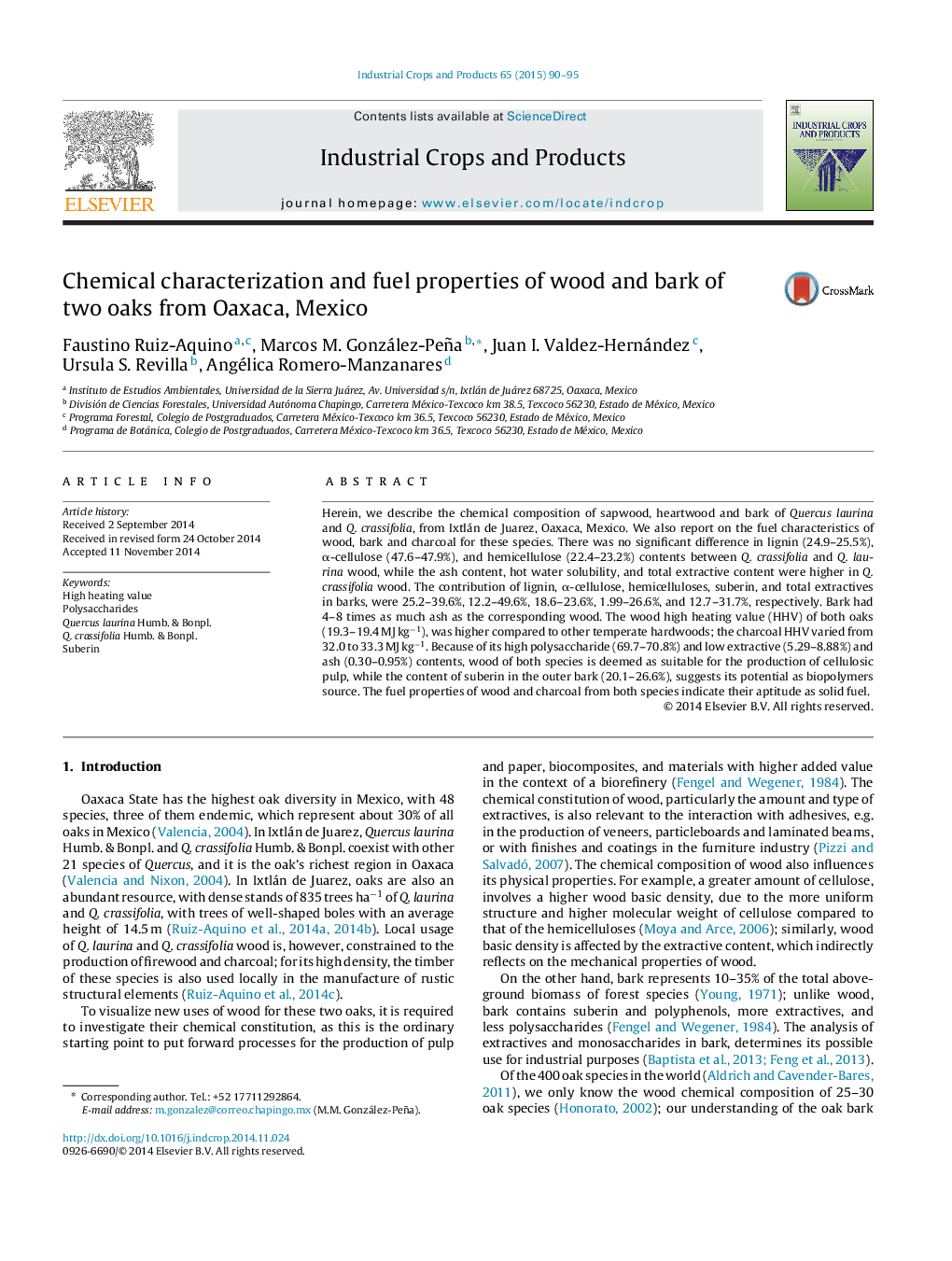| Article ID | Journal | Published Year | Pages | File Type |
|---|---|---|---|---|
| 6376217 | Industrial Crops and Products | 2015 | 6 Pages |
Abstract
Herein, we describe the chemical composition of sapwood, heartwood and bark of Quercus laurina and Q. crassifolia, from Ixtlán de Juarez, Oaxaca, Mexico. We also report on the fuel characteristics of wood, bark and charcoal for these species. There was no significant difference in lignin (24.9-25.5%), α-cellulose (47.6-47.9%), and hemicellulose (22.4-23.2%) contents between Q. crassifolia and Q. laurina wood, while the ash content, hot water solubility, and total extractive content were higher in Q. crassifolia wood. The contribution of lignin, α-cellulose, hemicelluloses, suberin, and total extractives in barks, were 25.2-39.6%, 12.2-49.6%, 18.6-23.6%, 1.99-26.6%, and 12.7-31.7%, respectively. Bark had 4-8 times as much ash as the corresponding wood. The wood high heating value (HHV) of both oaks (19.3-19.4 MJ kgâ1), was higher compared to other temperate hardwoods; the charcoal HHV varied from 32.0 to 33.3 MJ kgâ1. Because of its high polysaccharide (69.7-70.8%) and low extractive (5.29-8.88%) and ash (0.30-0.95%) contents, wood of both species is deemed as suitable for the production of cellulosic pulp, while the content of suberin in the outer bark (20.1-26.6%), suggests its potential as biopolymers source. The fuel properties of wood and charcoal from both species indicate their aptitude as solid fuel.
Related Topics
Life Sciences
Agricultural and Biological Sciences
Agronomy and Crop Science
Authors
Faustino Ruiz-Aquino, Marcos M. González-Peña, Juan I. Valdez-Hernández, Ursula S. Revilla, Angélica Romero-Manzanares,
